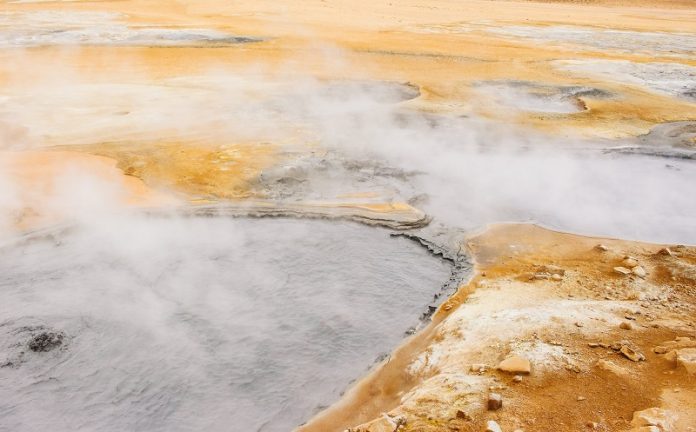
Long ago, more than 3.5 billion years in the past, Earth was a very different place.
Scientists have been trying to solve a big mystery: how did life start on our planet?
A team from Newcastle University might have found some exciting clues in ancient hot springs.
These researchers looked back in time to understand life’s beginnings. They believe the first living things came from non-living materials found on Earth.
To test their ideas, they did some experiments in their lab, trying to recreate the conditions of early Earth.
Here’s what they did: they mixed together hydrogen gas, bicarbonate (a kind of salt), and a mineral called magnetite. These are things that you could find in hydrothermal vents—places on the ocean floor where hot water comes out.
The result?
They made a bunch of organic molecules, including fatty acids. Fatty acids are important because they can form membranes, like the ones that surround all cells.
So, why are fatty acids so special? They are long molecules that can do a neat trick in water: they can form little bubbles or compartments. These are like tiny rooms, and scientists think they could have been the first cell membranes.
This is important because for life to start, you need a way to keep the inside of a cell separate from the outside world.
But where did these fatty acids come from originally? One idea is that they were made in hydrothermal vents. In these vents, hot water full of hydrogen mixes with seawater that has carbon dioxide (CO2).
The Newcastle team recreated this environment in their lab. They found that when you mix these elements with iron minerals (which were common in early Earth’s oceans), you get the molecules needed for primitive cell membranes.
Dr. Graham Purvis, who led the study, says that these early cell compartments were crucial. They helped concentrate chemicals and create energy, which are necessary for life. He thinks that when hydrogen-rich fluids from the vents met with bicarbonate-rich waters on iron minerals, it could have formed the first cell membranes.
The team’s work doesn’t stop there.
They’re now trying to figure out how these organic molecules could turn into actual cell-like structures. Dr. Jon Telling, another researcher on the project, believes their findings are the first step in understanding how life began.
What’s really exciting is that this kind of process might still be happening today, not just on Earth but also on icy moons in our solar system. This means that life could potentially start in similar ways in other places too!
In short, the Newcastle team’s research takes us a step closer to understanding the great mystery of how life on Earth began, possibly in ancient hot springs, setting the stage for everything that came after.



